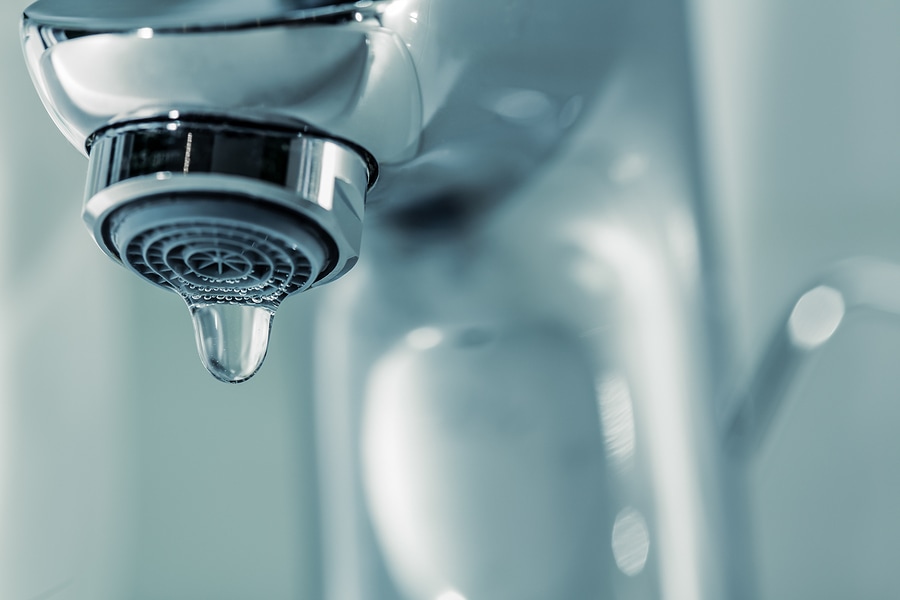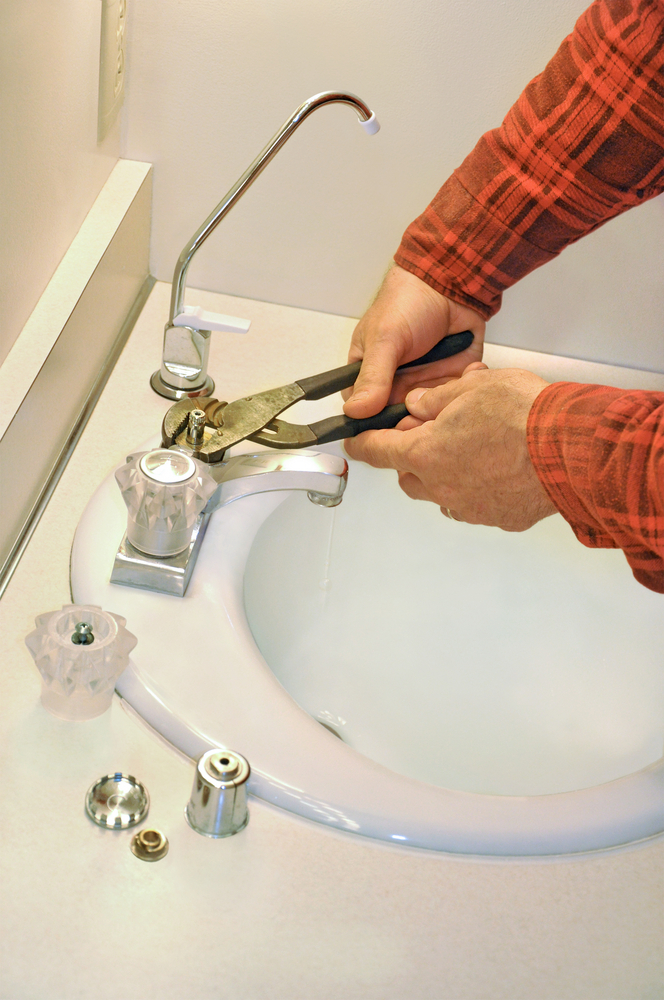Why It's Important to Repair a Broken Faucet
Why It's Important to Repair a Broken Faucet
Blog Article
This great article which follows on the subject of Why It's Important to Fix Leaky Faucets is indeed enjoyable. Give it a go and draw your own assumptions.

Dripping faucets may appear like a minor inconvenience, but their effect surpasses just the annoyance of the noise. From drainage to incurring unneeded economic prices and health dangers, ignoring a trickling faucet can cause different repercussions. In this write-up, we'll look into why it's important to address this typical household problem promptly and successfully.
Wastage of Water
Environmental Influence
Dripping faucets add significantly to water waste. According to the Epa (EPA), a solitary faucet dripping at one drip per second can lose greater than 3,000 gallons of water each year. This not just strains water resources but likewise influences ecological communities and wildlife dependent on them.
Step-by-Step Overview to Fixing a Dripping Tap
Devices Called for
Prior to attempting to repair a leaking faucet, collect the essential devices, consisting of a flexible wrench, screwdrivers, replacement parts (such as washing machines or cartridges), and plumber's tape.
Typical Faucet Issues and Their Solutions
Recognize the kind of faucet and the specific concern triggering the drip. Usual issues include damaged washing machines, corroded shutoff seats, or defective O-rings. Describe producer guidelines or on the internet tutorials for detailed support on repair services.
Financial Expenses
Boosted Water Expenses
Beyond the environmental impact, dripping taps can blow up water expenses substantially. The built up wastage with time equates into greater energy expenses, which can have been prevented with timely fixings.
Prospective Home Damage
Moreover, long term dripping can bring about damage to components and surfaces bordering the faucet. Water build-up can cause discoloration, rust, and also structural issues if left ignored, leading to added repair work prices.
Health and wellness Issues
Mold And Mildew and Mold Growth
The constant existence of dampness from a leaking faucet creates a suitable atmosphere for mold and mildew and mildew growth. These fungis not just endanger indoor air quality however additionally posture health risks, specifically for people with respiratory system problems or allergic reactions.
Waterborne Conditions
Stationary water in trickling taps can end up being a breeding place for germs and other pathogens, increasing the threat of waterborne conditions. Pollutants such as Legionella microorganisms prosper in stagnant water, potentially bring about severe health problems when ingested or breathed in.
DIY vs. Specialist Repair service
Benefits and drawbacks of DIY Fixing
While some may try to repair a trickling tap themselves, DIY fixings come with their very own set of difficulties. Without correct knowledge and devices, do it yourself attempts can worsen the issue or result in insufficient repairs, prolonging the issue.
Benefits of Employing a Specialist Plumber
Working with a professional plumber guarantees that the underlying root cause of the trickling tap is attended to properly. Plumbers possess the competence and tools to detect and fix faucet issues efficiently, saving time and minimizing the risk of further damage.
Ecological Duty
Specific Payment to Preservation
Taking obligation for repairing leaking faucets straightens with more comprehensive initiatives toward water conservation and environmental sustainability. Every person's activities collectively make a significant influence on protecting precious sources.
Sustainable Living Practices
By focusing on prompt repair services and embracing water-saving habits, people add to sustainable living methods that profit both present and future generations.
Safety nets
Regular Upkeep Tips
To avoid leaking faucets, execute routine maintenance such as cleansing aerators, checking for leakages, and replacing worn-out components without delay. Additionally, think about mounting water-saving devices or upgrading to much more effective fixtures.
Value of Prompt Services
Addressing trickling taps as soon as they're discovered stops more water wastefulness and possible damage, ultimately saving both water and money over time.
Effect On Property Value
Understanding of Well-Maintained Residential Property
Keeping a residential or commercial property in good condition, including addressing upkeep concerns like leaking faucets, enhances its perceived worth and charm among potential customers or occupants.
Influence on Resale Worth
Properties with properly maintained plumbing components, including faucets, command greater resale values in the property market. Attending to dripping taps can contribute to a favorable impression throughout home inspections and settlements.
Conclusion
Attending to a trickling tap goes beyond simple ease; it's an important action towards conserving water, minimizing economic costs, and securing wellness and home. Whether with do it yourself repairs or professional support, doing something about it to fix dripping faucets is a small yet impactful method to promote accountable stewardship of resources and contribute to a healthier, much more sustainable future.
Most Common Reasons for a Leaky Faucet and How to Stop the Drip
Whether it’s your kitchen faucet leaking or a bathroom faucet leaking, one leaky faucet can waste anywhere from three to 30 gallons of water every single day. If the constant drip-drip-drip doesn’t get your attention, your water bill will. The good news is that, by following a few simple steps, chances are pretty good you can fix the problem yourself.
Why is it dripping?
Before you start taking things apart, let’s break down some of the most common causes of a leaky faucet.
Bad O-ring.
A cartridge is a valve that controls the flow of water into the faucet spout. On cartridge faucets there’s an O-ring—the little disc attached to the stem screw that holds the faucet handle in place. If it’s loose or worn-out, it can cause your sink handle to leak. Of course, the cartridge itself could be worn out. If that’s the case, make sure you replace it with the exact same kind.
Corroded valve seat.
The valve seat connects the faucet and the spout. If the leak seems to be coming from the spout, it might be because a buildup of water sediment has corroded the valve seat.
Worn-out washers or seals.
A leaky spout could be caused by a bad washer that rests against the valve seat. It’s just a matter of time before friction takes its toll. It could also be the wrong size washer or one that’s been installed incorrectly. Water sediments can also corrode inlet and outlet seals.
Water pressure.
If the faucet only drips now and then, or when you turn the handles a certain way, you should probably check your home’s water pressure.
Loose or broken parts.
The adjusting ring and packing nuts in the stream screw can become loose over time, causing your sink handle to leak. Try tightening or replacing the packing nut. If the leak is coming from the pipes underneath the sink, you probably have a broken pipe or fitting. If that’s the case, you should definitely call a plumber.
Know your faucet.
Faucets come in a variety of types. Each one has its own assembly—and its own possible causes of leaks. Learning about the four most common kinds of faucets will help you know how to take them apart and make any repairs.
How to stop a leaky faucet
Fixing that leaky faucet doesn’t have to take a lot of time, money, or expertise. It’s usually a simple matter of replacing a worn-out washer or gasket, a loose O ring, or another part. Chances are really good you can do this yourself if you follow these simple steps.
Shut off the water.
Before you tackle the faucet, cut off the water supply to the sink. There should be one valve for hot and one for cold. Hand-turn them clockwise with your hands till they close. If there are no valves under the sink, head to the basement and shut off the main water supply to the house. Then turn on the faucet until it empties out the water that’s still in the line and you’re ready to start. It’s a good idea to cover the sink drain with a plug or a rag so you don’t lose any small pieces and parts while you’re working.

Hopefully you enjoyed reading our piece about Why Are My Faucets Dripping (And Can I Fix It Myself)?. Thank you so much for taking a few minutes to browse our piece of content. You should pause to distribute this entry if you enjoyed it. Thanks a lot for your time. Revisit us soon.
Report this page